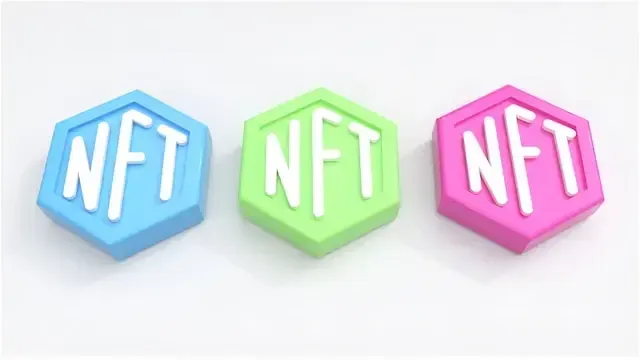In this article, we will explore the different types of garden edging, how to install them, and find the perfect one for your garden.
Garden edging might not be the first thing that comes to mind when you think about garden design, but it’s incredibly important. It helps define the boundaries of your garden, keeps grass and plants where they belong, and adds a neat, finished look. Whether you want a formal, tidy edge or something more natural, there are plenty of options to choose from. In this article, we will explore the different types of garden edging, how to install them, and find the perfect one for your garden.
Why Use Garden Edging?
Garden edging does more than just look nice. It helps:
- Define Spaces
Edging marks the boundary between your garden and lawn or different garden areas. This creates a neat and organized look, making it easy to see where one area ends and another begins. It also simplifies garden planning and design, ensuring each section is distinct.
- Keep Grass Out
Edging prevents grass from invading flower beds or vegetable gardens. Without it, grass can spread and compete with your plants for nutrients and water. A proper barrier reduces weeding and keeps your garden plants in their designated spaces.
- Control Mulch and Soil
Edging keeps mulch and soil contained, reducing mess and maintenance. It acts as a barrier to prevent materials from spilling onto your lawn or pathways, helping maintain a tidy appearance and minimizing cleanup efforts.
- Add Style
Different types of edging, like classic brick, natural stone, modern metal, or whimsical bamboo, can enhance your garden’s aesthetic. The right edging adds style and character, whether you’re aiming for a formal, rustic, or playful look.
- Improve Drainage
Properly installed edging helps direct water flow and prevent erosion. It channels rainwater away from garden beds, reducing waterlogging and soil erosion, which is especially important in areas with heavy rainfall or on slopes.
- Reduce Pest Problems
Edging can deter pests by creating a barrier that prevents insects and animals, like slugs and snails, from entering your garden beds. This extra layer of protection helps reduce the need for chemical treatments and fosters a healthier garden environment.
1. Brick Edging
What It Is: Brick edging uses bricks or pavers placed along the edge of your garden. You can use standard bricks or decorative pavers.
Why It Works: Brick edging creates a solid, durable boundary that looks great and lasts a long time. It’s perfect for creating a formal, classic look in your garden.
- How to Install:
- Mark the Area: Use a garden hose or string to outline where you want the edging.
- Prepare the Ground: Dig a trench about 2-3 inches deep and slightly wider than the bricks.
- Lay the Bricks: Place the bricks in the trench, making sure they are level and aligned.
- Fill Gaps: Fill any gaps with soil or sand and press down to secure the bricks.
2. Stone Edging
What It Is: Stone edging uses natural or manufactured stones to create a rustic or elegant look.
Why It Works: Stone edging is strong and can withstand weather and garden activities. It also adds a natural, organic touch to your garden.
- How to Install:
- Choose Your Stones: Select stones that fit the style of your garden and are the right size.
- Outline the Area: Mark the edging line with a hose or string.
- Prepare the Trench: Dig a trench for the stones, ensuring it’s deep enough for stability.
- Place the Stones: Arrange the stones in the trench, adjusting them as needed to ensure they fit well.
- Secure the Stones: Fill around the stones with soil or gravel and press down to stabilize them.
3. Wood Edging
What It Is: Wood edging uses wooden boards, logs, or timbers to create a natural border for your garden.
Why It Works: Wood provides a rustic and natural look, and it can be an affordable option. It blends well with natural garden settings.
- How to Install:
- Select Wood: Choose pressure-treated wood or hardwood for durability.
- Mark the Edge: Use a hose or string to mark the desired edging line.
- Prepare the Area: Dig a trench for the wood pieces, making sure it’s level.
- Install the Wood: Place the wood pieces in the trench, ensuring they are straight and aligned.
- Secure the Wood: Use stakes or pegs to secure the wood in place and fill gaps with soil.
4. Plastic Edging
What It Is: Plastic edging is a flexible, often lightweight material that can be shaped and installed easily.
Why It Works: Plastic edging is inexpensive, easy to install, and available in various styles and colors. It’s great for creating clean, straight lines or gentle curves.
- How to Install:
- Choose Your Plastic Edging: Select the type and color that fits your garden design.
- Mark the Line: Outline the edge with a hose or string.
- Prepare the Ground: Dig a shallow trench along the marked line.
- Install the Edging: Place the plastic edging in the trench, making sure it fits snugly.
- Secure the Edging: Use stakes or pins to hold the edging in place and backfill with soil.
5. Metal Edging
What It Is: Metal edging uses strips of metal, such as steel or aluminum, to create a sleek, modern border.
Why It Works: Metal edging is durable, low-maintenance, and gives a contemporary look to your garden. It’s perfect for clean lines and modern designs.
- How to Install:
- Select Metal Edging: Choose metal edging that suits your garden style and size.
- Mark the Edge: Use a hose or string to outline where the edging will go.
- Prepare the Trench: Dig a trench to fit the metal edging.
- Place the Edging: Install the metal edging in the trench, aligning it properly.
- Secure the Edging: Hammer stakes into the ground to secure the metal in place and fill in any gaps.
6. Concrete Edging
What It Is: Concrete edging uses poured or pre-cast concrete to create a solid, long-lasting border.
Why It Works: Concrete edging is extremely durable and can be molded into various shapes and sizes. It provides a clean, finished look and is ideal for high-traffic areas.
- How to Install:
- Prepare the Form: Use form boards to create the shape of the edging.
- Mix the Concrete: Prepare the concrete mix according to the package instructions.
- Pour the Concrete: Pour the concrete into the form boards, smoothing it as you go.
- Let It Set: Allow the concrete to set and cure according to the manufacturer’s recommendations.
- Remove Forms: Once the concrete is fully set, remove the form boards.
7. Rubber Edging
What It Is: Rubber edging is made from recycled rubber and is flexible and durable.
Why It Works: Rubber edging is eco-friendly, easy to install, and provides a cushioned border that’s great for garden paths and edges.
- How to Install:
- Choose Rubber Edging: Select rubber edging that fits your garden’s style and needs.
- Mark the Edge: Outline the desired border with a hose or string.
- Prepare the Ground: Dig a shallow trench for the rubber edging.
- Install the Edging: Place the rubber edging in the trench, adjusting for fit.
- Secure and Backfill: Use stakes if needed to secure the edging and backfill with soil.
8. Gravel Edging
What It Is: Gravel edging uses small stones or gravel to create a loose, natural border.
Why It Works: Gravel is affordable, easy to install, and provides a casual, rustic look. It allows for good drainage and can be used in various garden designs.
- How to Install:
- Choose Gravel: Select gravel that complements your garden style.
- Outline the Area: Use a hose or string to mark where the gravel will go.
- Prepare the Trench: Dig a trench where you’ll place the gravel.
- Add a Barrier: Lay down landscape fabric to prevent weeds from growing through the gravel.
- Fill with Gravel: Pour the gravel into the trench, spreading it evenly.
9. Bamboo Edging
What It Is: Bamboo edging uses bamboo poles or fencing to create a natural, exotic look.
Why It Works: Bamboo is eco-friendly and provides a unique, tropical feel. It’s also durable and can withstand various weather conditions.
- How to Install:
- Choose Bamboo: Select bamboo that fits your garden’s style.
- Mark the Edge: Outline the desired border with a hose or string.
- Prepare the Ground: Dig a trench for the bamboo.
- Install the Bamboo: Place the bamboo poles or fencing in the trench, aligning them properly.
- Secure and Backfill: Use stakes or pegs to secure the bamboo and fill gaps with soil.
10. Shell Edging
What It Is: Shell edging uses seashells or crushed shells to create a decorative border.
Why It Works: Shell edging adds a coastal or beachy feel to your garden and provides good drainage. It’s ideal for gardens with a nautical theme.
- How to Install:
- Collect Shells: Gather seashells or crushed shells for your edging.
- Mark the Area: Outline where you want the shell edging with a hose or string.
- Prepare the Trench: Dig a shallow trench for the shells.
- Add a Barrier: Lay down landscape fabric to prevent weeds from growing through.
- Fill with Shells: Pour the shells into the trench, spreading them evenly.
Tips for Installing Garden Edging
- Plan Ahead
Before you start installing edging, plan your design carefully. Decide where you want the edging to go and what type will work best with your garden’s style. Measure the area to ensure you purchase enough material.
- Use a Level
For straight edging, use a level to ensure your edging is even. This will help create a professional-looking finish and prevent uneven edges.
- Keep Edging Secure
Make sure your edging is securely installed. For materials like metal or plastic, use stakes or pins to hold them in place. For heavier materials like stone or concrete, ensure they are properly set and stable.
- Regular Maintenance
Even after installation, garden edging needs regular maintenance. Check for any shifting or damage, and clean the edging as needed to keep it looking its best.
- Consider Drainage
Good drainage is important for maintaining the health of your garden. Ensure that your edging allows for proper water flow and doesn’t create pooling or drainage issues.
Conclusion
Choosing the right garden edging can transform your outdoor space, offering both style and practicality. From classic brick and stone to modern metal and rubber, there’s an edging option to suit every garden design. Properly installed, these borders define spaces, keep grass and mulch in place, improve drainage, and even help with pest control. Whether you prefer a formal look or a more natural style, thoughtful selection and installation will create a beautiful, well-maintained garden that enhances your landscape and stands out.


























